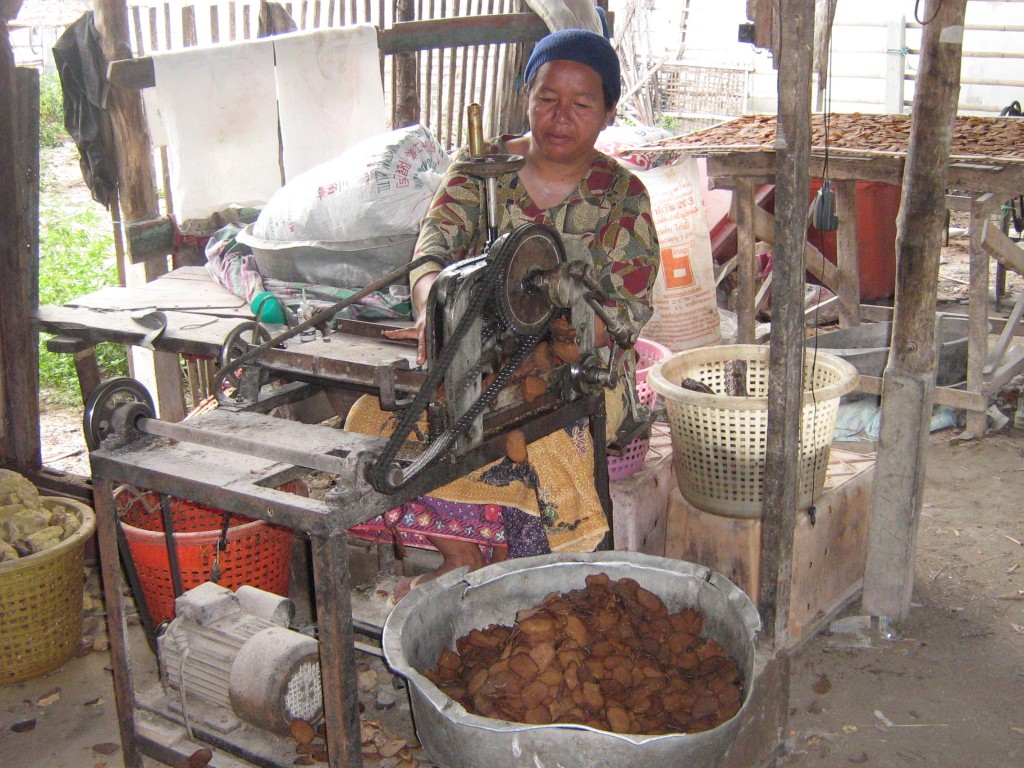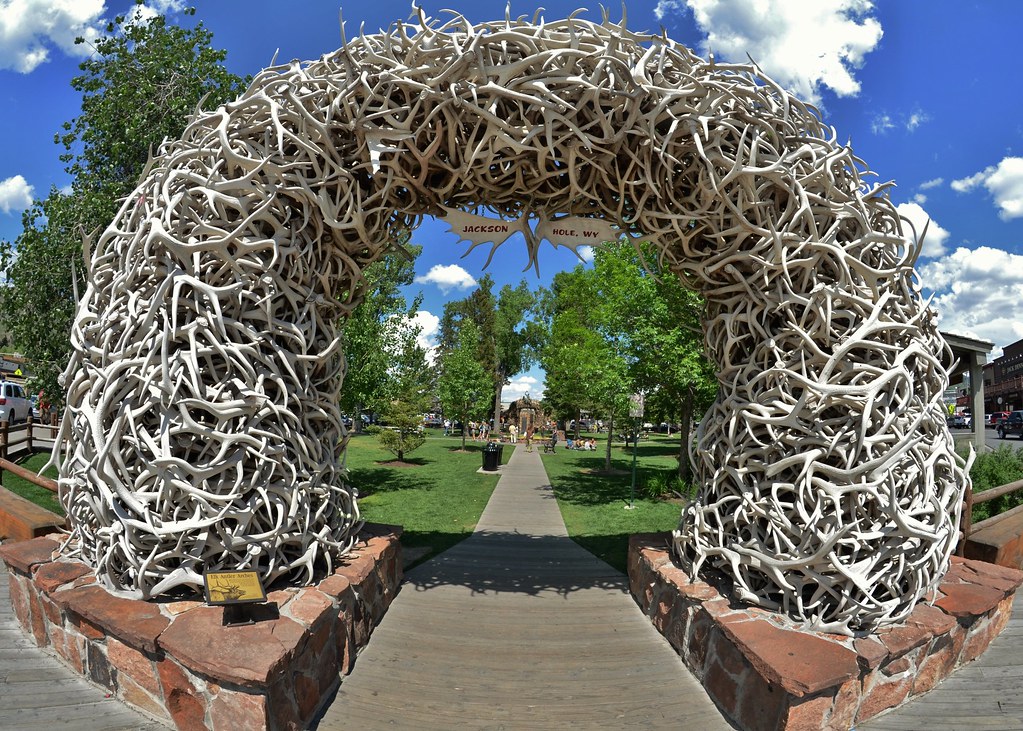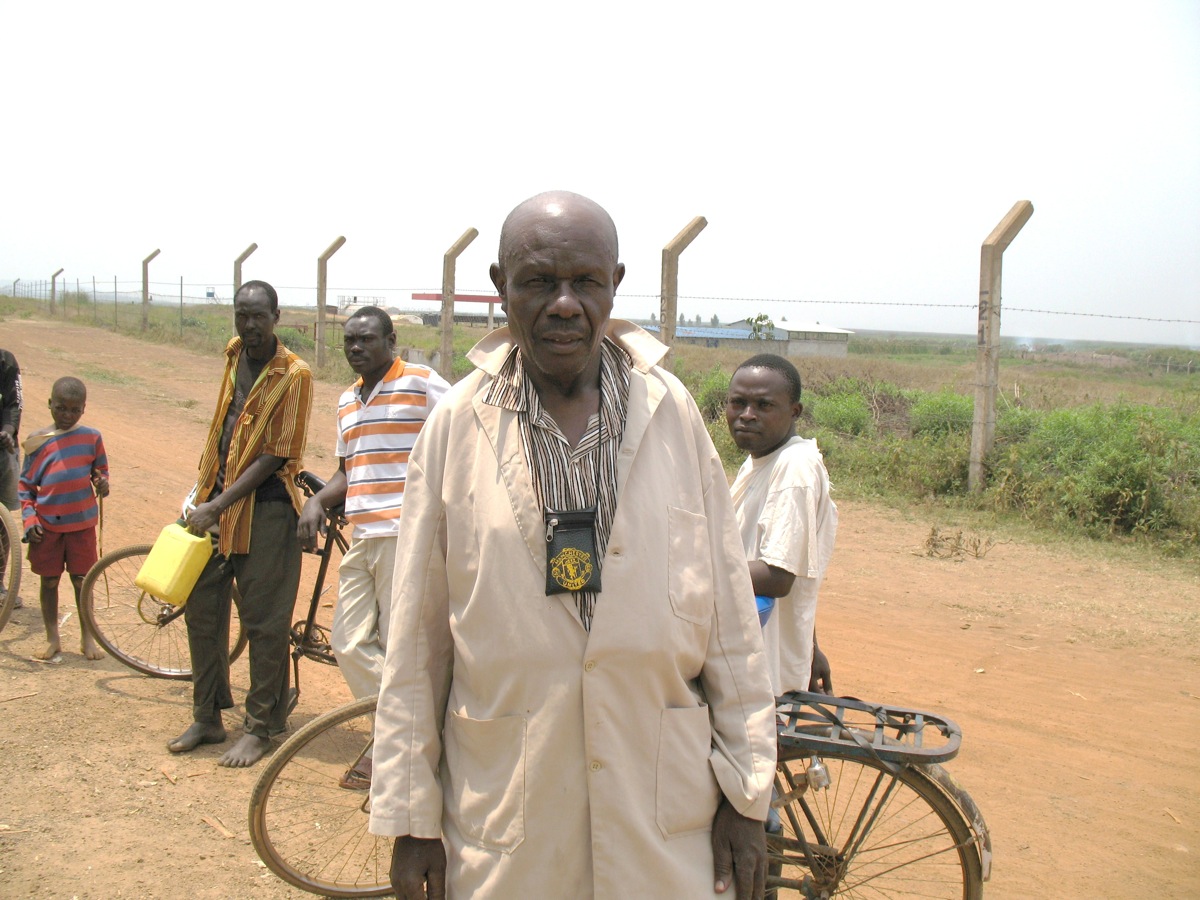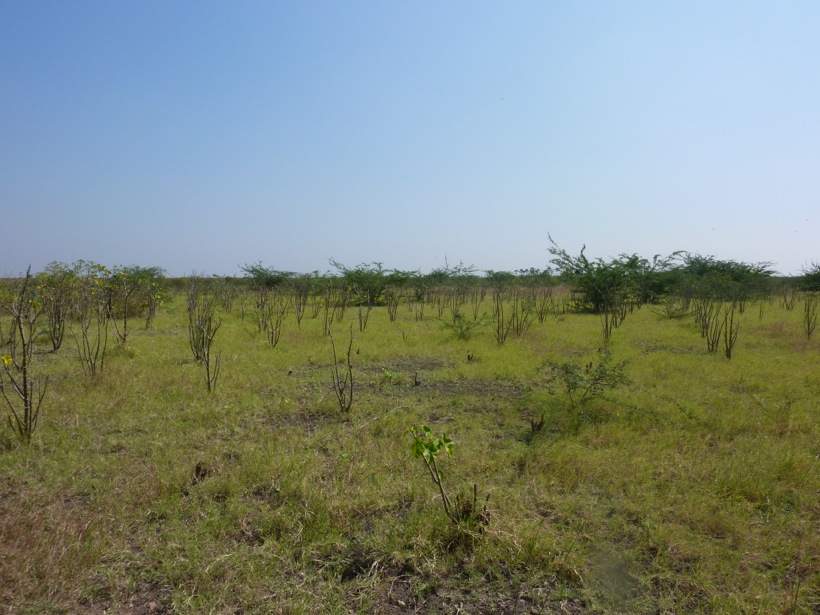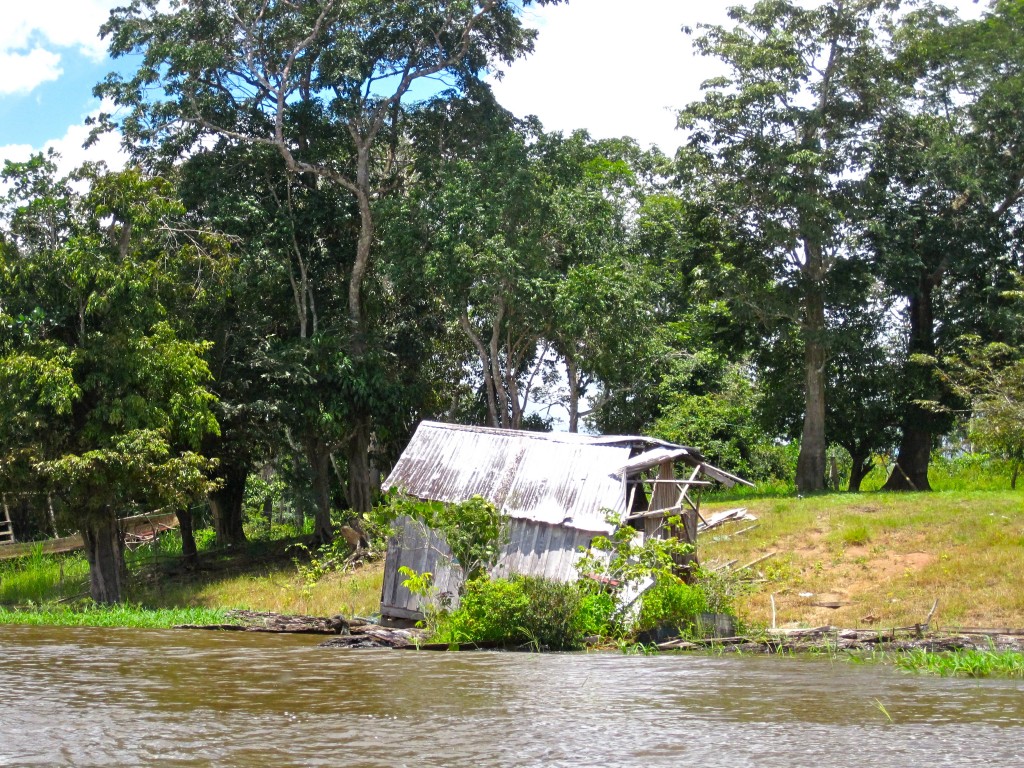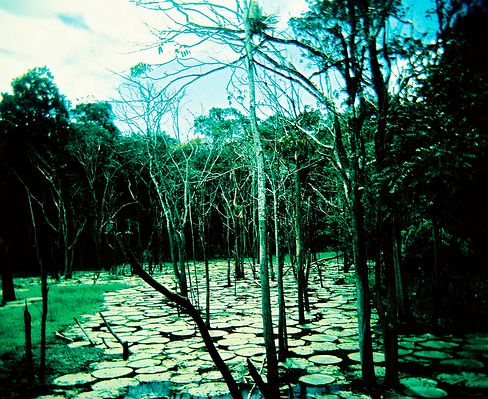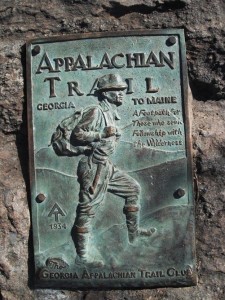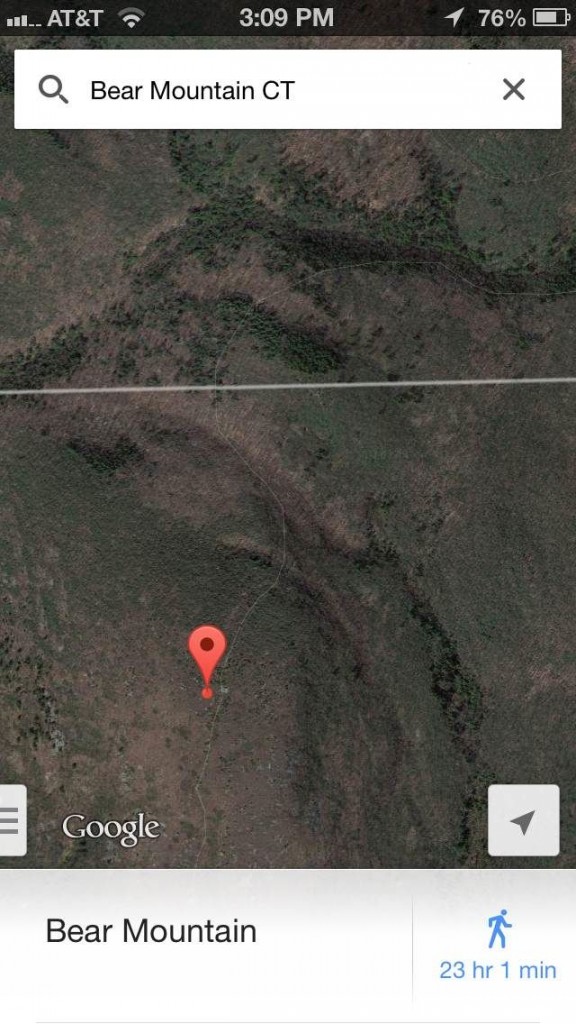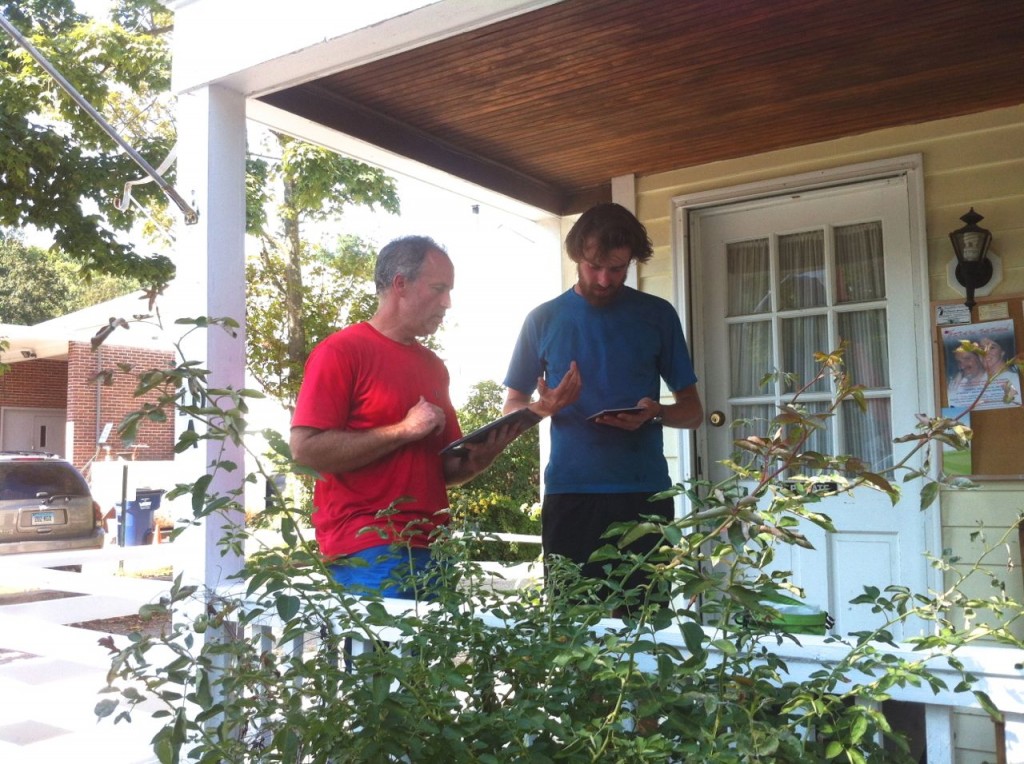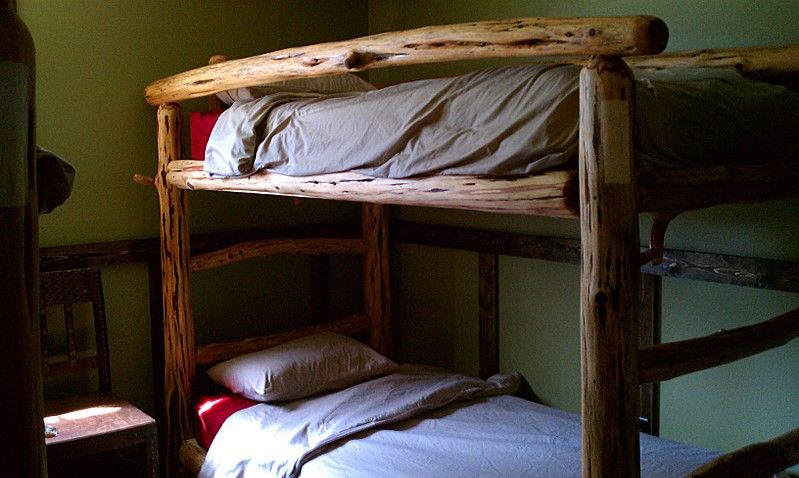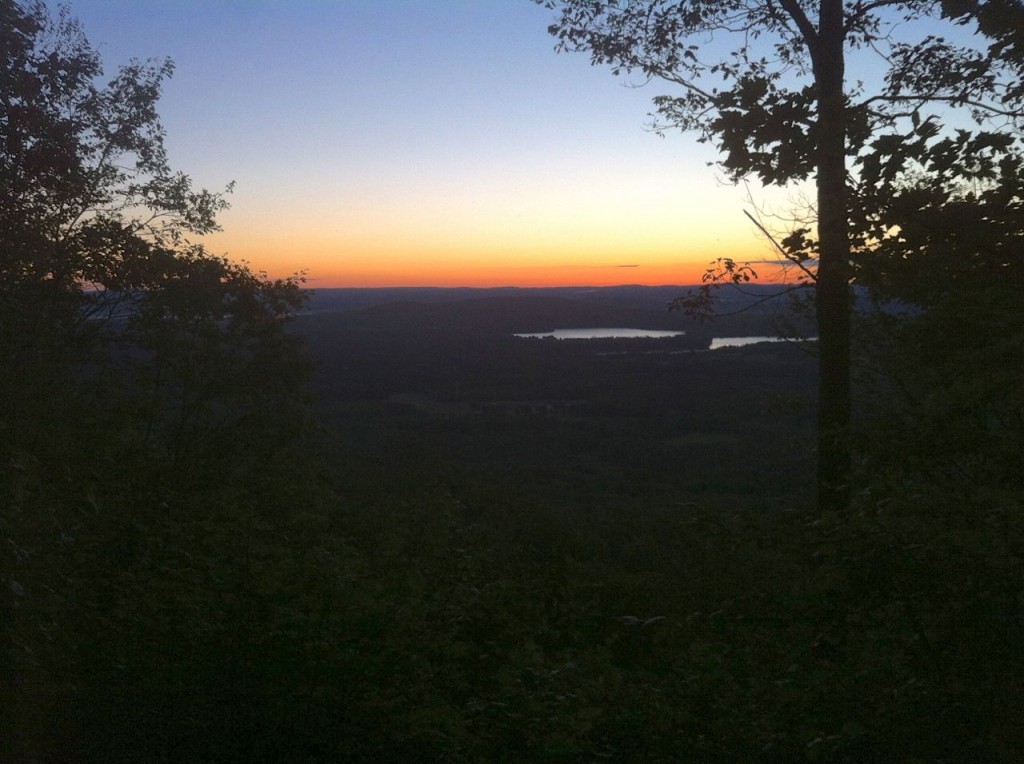Ed. Note: Just Enough was awarded second place in the 2012 Sage Magazine Young Environmental Writers Contest.
It is daybreak in the southernmost tip of Thailand, and Pattani Bay is smooth as a lake, reflecting the purple and orange which streak across the sky announcing the sun. I am accompanying Abdulla, a local fisherman, as he draws up the crab nets he has placed the night before. Every morning after his pre-dawn prayer, Abdulla sets out from the shores of the small fishing village where he lives and spends about three hours in his boat pulling up 800 meters of net. Standing at the bow in his canvas hat and sweat pants, he works alone, sometimes humming as he pulls up the long strips of mesh, which sparkle as the water slides off them in the soft morning sun. When he encounters an entangled crab, he tosses that section of net to the stern of the boat where I am sitting. The catch comes in slowly, with about one crab per thirty meters of net, but the net is long. By the end of three hours about thirty crabs and a dozen or so fish of low value lay piled at my feet.
When the last net is pulled we return to shore and Abdulla’s mother, a lively lady with a warm round face, greets us. She comes to inspect the catch and immediately begins detangling the crabs, a process that will take the next hour or so. Abdulla will not let me leave without taking some, so try as I might to refuse, I depart with a small plastic bag of blue crab fresh from the sea. The catch that day is poorer than usual. Accounting for the price of gasoline, Abdulla will make a profit of about $4 –– on a good day it could be as much as $10 but usually it’s somewhere around $6. By the end of most days the money will be finished, but it may be just enough to cover daily food expenses, tea, cigarettes, and school fees for his kids.
Abdulla’s livelihood is typical of the thousands of fishermen living off the fragile estuarine ecosystem of Pattani Bay and many other small-scale fishermen throughout Thailand. Living on tight margins and relying on natural resources which are becoming increasingly scarce, he stands outside what has become the dominant narrative of modern Thailand –– a remarkable story of rapid economic progress. He also stands inside one of Thailand’s most troubled regions.
***
The Southern Three Provinces of Thailand, where Abdulla lives, are locked in an insurgency that rarely makes it into the news in America, but has claimed over 3,500 lives. Unlike the rest of the mostly Buddhist country, the Southern Three Provinces are predominantly Muslim, and local people speak a Malay dialect, which is written in Arabic script. Since their incorporation into the country in 1903, they have had a tumultuous relationship with the central Thai state, which has promoted a Buddhist-centered nationalism. In 2004, insurgent sentiments erupted in a series of raids on police and army outposts, and since then the violence has escalated steadily. Identifying the perpetrators has been difficult, and government policies have divided rather than healed, as heavy-handed military and police actions have vilified and oppressed the local Malay-speaking Muslim people rather than assisted them. Long-held cultural prejudices among the Thai Buddhist mainstream about Malay-speaking Muslims –– whom they perceive as under-developed, undereducated, and lazy –– only exacerbate the situation. By the time I first reached the region in the summer of 2006, it was considered by most Thais to be a very dangerous place.
I came to Dato, the small fishing village where Abdulla lives, not as a student of this conflict but as a student of the natural environment. After working in Thailand for two years on water and forest management, I was concerned with the wrenching changes facing rural communities that had traditionally depended on agricultural or fishing livelihoods but were finding it more and more difficult to make a living. The six dollars to be earned per day by fishing is meager when compared to the rising incomes of Thailand’s growing middle class, and small-scale fishing operations like Abdulla’s can seem less and less attractive by comparison.
At the same time, nearly everyone in the country –– on all sides of the political spectrum –– was touting the merits of something called in Thai setakit paw piang, which translates literally into the “sufficient” or “just enough” economy. Government-sponsored television ad campaigns, featuring soft-focus images of smiling children donning homespun clothes in emerald green landscapes, espouse the beauty of a simple rural life removed from material consumption and western excess. However, given the limited extent to which these values were embraced by the credit card-wielding, gadget-hungry Thai middle class, including those who conceived this campaign, I wondered if perhaps these ads were aimed mostly at convincing those who couldn’t join the country’s economic growth parade to be happy with the poverty they got in exchange.
My contacts at the Prince of Songkhla University, forty-five minutes away, directed me to Dato. I was studying rural environmental activism, and I wanted to learn how Dato’s small-scale fishermen, who lived far from the halls of power, had come to challenge commercial interests and government development schemes that threatened the bay where they lived. The people of Dato, in partnership with the local university, had planted large stretches of mangrove forests along their shores, started a youth conservation club, and led the efforts for policy reform regarding natural resource management in Pattani Bay. I also hoped that spending a summer in the Southern Three Provinces would help me penetrate the dense fog of misunderstanding surrounding the conservative Islamic culture for which the region was known. As I soon learned, only by getting to know this culture would I begin to find the answers to my question.
***
My first day in Dato, I waited for Dah, who had told my contacts at the university that she could find time to be my guide and interpreter during my stay there. She would help me talk to people in the village about how they made a living and about local environmental efforts. She had business in the neighboring village and would not be arriving for some time. The leader of the community religious school, Che’gu Rawning, had spotted me walking around awkwardly in the village square –– as a six foot tall woman, dressed in a bright green T-shirt, I was hard to miss. He invited me to the teashop next to the school; an old man had just bought me tea when Dah zipped up on her motorbike. She wore an ankle length muted batik skirt, long-sleeved tunic, and hijab, or headscarf. She looked about as old as me, in her late twenties, though when I rose to meet her I realized I was at least a full foot taller than her. She greeted me warmly and took charge right away, informing me that we would now go to her house. “You drive and I’ll sit on the back,” she said. I was too eager to make a good impression to argue, so in my first ride on a motorbike in over a year, I shakily navigated the two of us on her 100cc Honda Dream, skidding across the sandy square and then down the narrow sidewalk that formed the main thoroughfare of Dato. Small children and adults alike stared as we careened down the path, dodging chickens, goats, and toddlers, and skirting uncomfortably close to occasional puddles of sewer water pooling by the path’s edges. Except for the enormous American driving the bike, this was the standard mode of travel through Dato.
We parked at Dah’s grandmother’s house. Because I had said that I wanted to learn the local dialect, she spoke to me the whole time in abbreviated Malay instead of Thai. I understood nothing but saw that with Dah at my side, this would soon change. She had the authority and command of someone used to making knowledge sink into even the most resistant skulls. She was a senior teacher at the evening Islamic school, and her stern demeanor, quick wit, and underlying gentleness meant that she often taught the very youngest group of five-years-olds, whom no one else could control. As I would soon learn, she belonged to a cohort of bright young single women who were trained to the full extent of the Islamic education system and were now employed as religious teachers in the village. Their education seemed to have limited their prospects for marrying or dulled their interest in the endeavor, or perhaps a combination of both. Dah was the leader of this group, known for her clear mind and sharp tongue.
Dah took me to her great grandmother’s house across the street, and then to a sandy lot in back, surrounded by a tired wooden fence built to exclude the scavenging goats waging a tireless campaign at entry. We came here to meet her sister, Suraida, who was working as usual at the family business of making fish crackers. Suraida sat in the middle of a blue tarpaulin with a sea of small brown crackers rolled out around her. According to local legend, fish crackers were invented in Dato and they provided one of the three primary industries employing the people of the village; the others were fishing and restaurant work across the border in Malaysia.
Dato was more fortunate than its neighbors to have this diversity in its economy, and fish crackers probably allowed the village to send fewer of its young people out of the country. People fortunate enough to own the heavy but simple equipment required for cracker-making usually set up operations in their own backyards. They ground together fish and flour into dough, which was then boiled and sliced into crackers. They dried the crackers on woven mats placed on simple bamboo frames, high enough to avoid Dato’s enthusiastic trash-disposal system, the village goats. The dried crackers were then bagged and sold to middlemen and women who distributed them throughout southern Thailand. To eat fish crackers, one had to fry them, and then they took on a crispy porosity that first tingled and then melted on the tongue.
I sat down with Suraida at the edge of the cracker sea while Dah went to take a shower. Suraida was putting the crackers into plastic bags to be sold, and I tried to help her but managed to pack only one bag for every four of hers. Suraida’s kind smile and gentle manner, combined with her youthful excitement at meeting me, were disarming. While I clumsily struggled with crackers and cellophane, she helped me stumble through a few sentences in local Malay. She sounded out words patiently and smiled expectantly as she waited for me to piece together my next phrase, all the while filling bags of fish crackers. By the time Dah returned from her shower to take me to our next destination, I could just about announce to her that I couldn’t yet speak Malay, but I was learning. Suraida smiled at me and said, “I think that at the end of two months we will be very good friends.”
After this I spent my days trying to absorb the life of the village. I hoped to understand how people like Abdulla and Suraida made a living off the resources of the sea, and whether they thought it was enough. My work, like all activities in the village, became oriented around the five daily prayers. I awoke each morning to the pre-dawn call to prayer, when mothers were preparing foods for their family and fishermen were readying themselves for their daily outings on the water. On certain days I would go fishing with people like Abdulla who didn’t mind me tagging along, but on others I just walked along the edges of Pattani Bay as people brought in their boats, piled high with nets in the bright wash of the morning sun. I would spend the day talking to people –– young women chatting in store fronts with their new babies on their hips, old men in tea shops, teenage girls sorting out fish crackers to dry, school teachers and construction workers from the nearby agricultural extension project joining the locals for lunch at the most cosmopolitan of Dato’s establishments, Kak Na’s noodle stand.
In the late afternoon, I would visit the daily congregation of teenagers by the beach, the soccer games at the schoolyard, and the families lounging on the village square –– a vast expanse of sand in the middle of town, where men held bird-singing contests and women sat in circles while their children scampered shirtless across the sand. As evening approached, little girls in nothing but polyester sweat pants would abandon their sand castles and squirm back into T-shirts which had been discarded during their play. They would stick their hands in the air while their mothers pulled their stately maroon religious school uniforms down over their heads and fastened their hijabs around their tussled short hair, transforming these grimey-handed little girls into portraits of Islamic piety. After the early evening prayers, all the children from age five to age twelve would go to Koran reading lessons at the community religious school, sitting in rows in a large upstairs room, squirming restlessly while Che’gu Rawning, the head teacher, introduced the daily lesson. Then they would gather into small groups, helping each other read and recite verses under the tutelage of the school teachers, many of them older cousins, aunts, or uncles. When it was time to regroup, the children would line up again, small scuffles and giggles breaking out until it was time to solemnly follow Che’gu Rawning in the motions and words of the evening prayer.
I happened to be in Dato during the World Cup. Being a soccer fan, I was determined to find a place in the village where I could watch the matches amongst an enthusiastic crowd. This was how I first became friends with the wai run. The phrase wai run is loosely translated as “teenager,” but it actually refers to anyone from their early teens well into their twenties. It describes a stage of life more than a particular age – a stage when one is unfettered with serious responsibilities like raising a family and can “go out” regularly with one’s friends. Perhaps uncoincidentally, within the village this term was used mainly to describe boys, since most girls took on a great deal of familial responsibility at an early age and their “going out” was not much approved of.
Near my sleeping quarters, behind the mosque, was a teashop frequented predominantly by wai run – not just any wai run, but a group who seemed to have a particular penchant for keeping their hair a little long, wearing old punk rock T-shirts, and huddling around the one tinny mp3-playing cell phone that they had between them to listen to Nirvana. It would be unheard of for a young woman of my age from the village to come to the male domain of the teashop alone at night, particularly this teashop, with its clientele of wayward youth. But my foreignness, combined with my boyish clothes, short hair, and the strong showing I made a few days earlier in a village soccer match, created a certain fascination and androgyny around my person that allowed me to venture in.
Besides the teashop’s convenient location, something about the rebelliousness of these kids drew me to this spot. Environmental organizations throughout Thailand always talk about protecting the way of life and the ancient and venerable culture of Thailand’s rural communities. These organizations are perhaps the most committed promoters of the “just enough economy,” which they see as a means for empowering the rural poor and a desirable alternative to Thailand’s current development path, which they see as environmentally and culturally destructive. They have invoked the concept while fighting to limit the intrusion of commercial fishing boats into Thailand’s Southern coastal fishing grounds and the spread of pollution from factories and shrimp farms into Pattani Bay. However, in my work in rural Thailand, I often doubted that the younger generation felt that what was just enough for their parents and their NGO allies was just enough for them. Cell phones, rock music, and the lure of the city might be more compelling than going out every day in a one-person boat to catch six dollars worth of fish. I was interested to see how a group of kids who had carved the name “Kurt Cobain” into the table at the tea shop felt about continuing a semi-subsistence lifestyle based on fishing and making fish crackers.
The teashop was built off the back of its owner’s house, delimited only by a second wall and roof. At night, which was when it came alive, it was lit with a single florescent bulb dangling from a dusty string of ancient wires. The center of attention was the television, mounted high in the corner of the two real walls. Sunk into the sandy ground around it were two stone tables ringed with red and pink plastic chairs in various stages of dilapidation. The one or two “grown-ups” –– people who were already married and for reasons I never discerned chose to mix with this crowd –– would sit at these tables while the overwhelming majority of customers, the wai run, would fill all the remaining vacant spaces. The serious soccer watchers would sit inside while the others would gather further out, so that the radius of the tea shop informally extended to the porches of neighboring houses and the sandy lot in front where extra tables and chairs held crowds of giggling, gossiping, smoking, tea-drinking, teenage boys. Against the far wall was a low-lying wooden platform where some of the most dedicated customers would lounge or sleep, often draped on top of each other like puppy dogs.
My arrival at the teashop was always accompanied by whichever kid was working that night jumping up to get me a fresh cool drink, and my departure was always marked by his refusal to take my money for it. The choices of drink were tea, coffee, or ovaltine –– hot or cold. Teashops are the center of male social life in Muslim villages throughout Southern Thailand, where alcohol is prohibited by religion and where prohibition is mutually enforced by social discipline. While I wouldn’t be surprised if occasionally these kids ventured into town to try a taste of beer or liquor, I can report that night after night for two months they sat at this same tea shop from 9:30 until midnight at least, drinking tea or coffee with their Metallica.
By the fourth night of the World Cup, I no longer had to order my drink, and a cup of ovaltine –– iced with milk but no sugar –– would appear on my table, delivered by a quietly smiling young man in a Sex Pistols T-shirt, sarong, and fashion mullet. I would sit and watch the game with the others, cheering for the ball-handling wizardry of our favorite stars, analyzing the questionable calls of the referees, and clucking our tongues at the misbehaved players. This is how each evening went until the middle of July, when finally the World Cup ended and we could divert our attention from the TV screen long enough to have a conversation.
Our first real conversation arose when the evening news reported on George Bush’s latest posturing towards Iran, and a young man in the tea shop asked me why the American president hated Muslims. So I started my first conversation with the wai run in the unfortunate position of having to explain that the American president’s foreign policies were not in theory an expression of hatred towards Muslims –– an argument which was understandably difficult for them to accept. After such a colorful start, we moved on, happily, to more mundane topics. On one night I expounded, at their request, upon rock concerts I had attended in America (all were incredulous that I had never made the effort to see Nirvana on stage). On another night, to their delight, I played them an underground Thai hip-hop album that had been banned due to, among other things, its irreverent banter against corruption. When I pulled out the photographs I took of the village they would scoot up their plastic chairs even closer, pointing with excitement as they saw themselves and people they knew in print. They smiled knowingly at the portrait of a small boy hamming it up during a school performance –– “That’s Ali. He’s a funny one.” When they saw a picture of the man who had taken me fishing on the other side of the village, they chuckled, “Oh –– Baeh Saeh, he sings beautifully. All the kids love him.”
I was, however, by no means the only thing that held their attention. One night I arrived at the tea shop to find them all sitting in rapt attention, eyes trained on the television screen where a jolly Thai chemist was mixing unusual precipitates in steaming test tubes on a popular science program. My attempts at conversation that night fell flat, as nothing I said was more interesting than the properties of dry ice being demonstrated on screen. Only when I rose to leave a bit earlier than usual did a handful of boys divert their eyes from the screen to tell me, with sincere regret, that I was going to miss a wonderful nature documentary that would air later that evening.
***
I soon made friends. One was a thin, gentle-faced young man in his early twenties, who I found out was Dah’s cousin. His name was Anwa, and although he was too shy to speak to me whenever I saw him during the day, at night at the tea shop he was the first to pull up a chair next to me. When I became tongue-tied in Thai or didn’t fully understand what was being said around me, he would kindly offer me explanations, and when no one else was talking, he would ask me questions. I came to rely on him for these translations, and he became a bit like an evening counterpart to Dah, helping me navigate a world that she could not enter.
I learned from Anwa that many of the wai run in this tea shop had not studied much beyond the eighth or ninth grade. In fact, most of the young people in Dato did not finish high school. In some cases it was a matter of money – pursuing high school education required traveling out of the village each day, and the expense of bus fares, books, and uniforms excluded many families living on the tight margins of fishing incomes. But in as many cases it was a matter of interest. Many young people had no better explanation for dropping out than being “bored” or “uninterested” in school, answers that would have only fed the prejudices that many in Thailand hold against the Malay-speaking Muslims of the South.
I couldn’t understand how a group of young men like the wai run at the tea shop, who were clearly intelligent and curious, could have such an abridged relationship with education. I was also concerned about the type and quality of education they received when they did continue their studies. The people of Dato consider it a spiritual necessity that their children receive a religious education as well as a secular education, so for secondary schooling, they send them to government-sponsored Private Islamic Schools –– which teach both Islamic and secular subjects –– or to bonoks, Islamic boarding schools. Secular education at many of these Private Islamic Schools is of lower quality than at regular government schools, and at bonoks, it is negligible. I thought of my friends among the wai run –– Adeh, with his carefully coifed hair, who wanted to be an artist, Lek who gathered honey from the trees in the nearby forest and was so enthralled with nature documentaries, Anwa with his quiet perception. I was concerned that at the religious schools they attended, they were being denied the exposure to a broad range of subjects that might spark their interests and make them excited about learning. Without a comprehensive exposure to the arts and sciences outside of religious topics, how would they be able to explore their potential to work in these other worlds?
I took these questions to Che’gu Rawning, who had become a good friend of mine within the village. A rotund man with a laughing face, Che’gu Rawning was the commanding voice that led one hundred squirming children in their daily evening prayers and the charismatic master of ceremonies of the school field days and performances that took over the village square and the town’s attention for a few days each year. He was also an outspoken member of the Pattani Bay environmental conservation network that worked with other villages and faculty from the nearby university to protect the rich resources of the Bay for small-scale fishing.
I asked him about the bonok system, which was criticized by those outside of the Southern region for promoting an insular culture among Malay-speaking Muslims and for acting as recruiting grounds for insurgents. I raised the common criticism that sending children to bonoks, where only religion is taught, limits their employment opportunities. Che’gu Rawning was used to fielding such questions, but they still frustrated him. “People who criticize bonoks don’t understand the Muslim way of life,” he said. “For Muslims, money is not important. We don’t need much, just enough to eat and enough to live. We gain sustenance from our hearts.” His defense of bonoks was a defense of a way of life to which they were linked, simple livelihoods like the ones in Dato, where moral sustenance and direction was to be found not in wealth and material consumption but in religious virtue and community. This constellation of values did not require the Thai education system, with its orientation to wage employment outside the village. Che’gu Rawning even insisted: “It’s like the just enough economy,” which the government promotes. I imagined that Bangkok policy makers might be surprised and discomfited by the suggestion that bonoks, which they suspected and even feared as a threat to Thai ideals of progress, might in fact have a role in the vision of the “just enough economy” that they so enthusiastically espoused.
Che’gu Rawning’s vision of a simple life oriented towards Islamic values was echoed when I spoke to the Tok Imam, the leader of the mosque and the highest moral authority in the village. He was a solemn but kindly old man who lived in a simple house behind the mosque. We spoke at length about the decline of crab and fish in Pattani Bay. I expressed my surprise that despite the availability of more aggressive fishing gear, fishermen in Dato continued to use simple boats and hand gear, which guaranteed them the same paltry catch each day. Some observers from outside the region interpreted this as further evidence of Malay laziness. Others attributed it to an aversion to taking on the debts required for further investment in gear. The Imam offered a different explanation: this restraint followed from Islamic teachings. Allah, he said, has provided humankind with natural resources, and these are enough for people to live off of. A person can take what he needs, but to take more than that and deprive others of their needs is wrong. “It is fundamental: we have to look after nature,” he said. “To destroy it is a sin.”
***
I met Amran and Wajihoh when I started venturing to what the people of Dato called “the outer sea.” Dato was built on a spit of land that jutted off the eastern shore of Pattani province to form Pattani Bay. Most of the village abutted the calm waters of the bay along the sandy shore and amidst the mangroves. However, a ten-minute walk down either one of the village’s two roads led to the other shore of the spit. This shore looked out over the Gulf of Thailand –– “the outer sea,” an altogether different beast from the placid bay. To a person like me, accustomed to the unruly breakers of America’s northeastern coast, this gently lulling expanse was about as tumultuous as a bathtub, but to the residents of Dato it was far more forbidding. When I started taking evening swims along the shore (with arms and legs covered by a makeshift wetsuit), I was hailed as a small wonder of athletic prowess and bravery.
The people of Dato considered this sea wild and unruly and only a small group of about fifteen families fished on these waters. In the evenings, they would gather under the shading tarpaulins that housed their boats, women chatting and mending nets, men scrubbing crab cages next to the water, and children frolicking at the water’s edge in varying degrees of undress. This was a time to work but also a time to be together as a family. It was also the most beautiful time of day, I thought, when the sun would shine its golden late-afternoon rays slantways upon the glistening sea and the laughing children, glancing off the hardened shoulders of men hunched at the waters edge, casting achingly stark shadows along the surf, all set against a brilliant blue sky. I was drawn to the beauty of this place, and I liked to think that the families that I met there in the late afternoon were also pulled there by something other than just work. It was here I first met Wajihoh. Not yet being married, he was sitting next to his boat mending his own nets. All the features of his serious face were trained on the red plastic threading tool darting in and out of the tattered green mesh of his crab boxes. He hardly looked up when I plopped down next to him.
I asked him about the gear he used in the outer sea. He seemed amused at my curiosity but answered me with few words. The outer sea required different equipment than the inner sea. Because the waves were much bigger here, he explained, he needed a bigger boat. He also used crab boxes, which were much more expensive to maintain than the simple nets used in the Bay. The catch in the outer sea was greater, though: twenty-five dollars worth of crab and fish was not unusual, and on a very good day, Wajihoh said, he could earn up to seventy dollars. He added matter-of-factly, “You also need to be brave. The waves can be high and you have to go far.”
Wajihoh studied to the ninth grade and then completed a three-year program to earn a vocational certificate to work as an electrician, an unusual move considering that few people in the village studied much beyond ninth grade. He worked as an electrician for a few years but stopped, he said, because “it was boring.” He then worked in Malaysia for a few years, before coming back to the village to fish with his younger brother.
The exodus of young women and men to Malaysia weighs heavily on community leaders in Pattani, since it reflects the decline of their traditional fishing livelihood as well as the inability of the larger Thai economy to support their people. Most of the migrants work without a proper visa in the kitchens of the numerous Thai restaurants sprouting up across the border in Malaysia’s Kelantan province. I have heard small-scale fishermen argue that if the seas were not overfished, then the young people would return home.
I asked Wajihoh if I could accompany him fishing the next day. He smiled at my foreigner’s enthusiasm for the mundane, but he said I would have to ask his younger brother, Amran, who I soon learned was the head of the operation. Amran was an energetic young man with the round curious face of a small boy. He was twenty-three years old, the same age as many of my friends in the tea shop, but his seriousness about work and his tendency to drink his tea with the older fishermen disqualified him from the ranks of the wayward wai run. When I asked him if I could join him fishing, his primary concern was that I would get seasick on the waves. My efforts to convince him of my seaworthiness –– I had spent days on sailing trips in waters much rougher than these –– were not effective.
Nevertheless, I arrived at the beach at 5:15 am. It was empty. I stood by the softly breaking waves utterly alone, with only the mosquitoes and the stars, which were so thick that they seemed to be splattered in the sky by a can of celestial spray paint. Then in twenty minutes, about ten motorbikes sputtered up the road to the edge of the beach. I could just discern the shadowy figures of the fishermen dismounting and approaching, right as the blackness on the water turned to deep early morning violet.
When they reached the boats they sprung into coordinated action, forming teams of ten in the half-light to heave their boats into the sea. I think it was only his surprise at my presence on the beach at that hour that compelled Amran to wave me on the boat. I took a seat by the bow. Amran captained at the stern while Wajihoh pushed us off and then jumped in, taking his seat in the middle.
As soon as we set off from the shore, they told me that if I was hungry or thirsty, I should eat the food and drinks they had brought on board. Since my arrival that morning was unexpected, I knew they were offering to give me their breakfast. Fortunately, I had tucked a paper-wrapped bundle of sticky rice in my bag earlier that morning, but I would join them in enjoying the cringingly sweet orange drink they had stuffed in the bow.
Just a few hundred meters from the shore, Amran gasped and pointed, “Look! Did you see it! A dolphin!” My disappointment at missing it was obvious, and Amran peered hard at the distance, trying to spot it again for me. He then began to tell me that the dolphins are where the catfish are, that he hadn’t seen one in a long time, and that old people say that when you see a dolphin there will be a windy day at sea soon. Thus began a running narration about the sea that would last the entire four-hour duration of our boat ride.
Amran and Wajihoh were a study in contrasts. Amran was eager and talkative, and his love for fishing beamed through his animated face as he pointed out the peculiarities of some crab, talked about last week’s catch, or railed against the depredations of the environmentally destructive commercial boats. Wajihoh, his thin handsome face smiling only occasionally, worked quietly, and allowed his brother to answer all the questions I directed at both of them.
As Wajihoh and Amran laid out crab cages, I was reminded of the refinement of skill required by every profession in this village. The rhythm and elegance of their system allowed them to retrieve, clean, rebait, and lay 330 crab cages in four different sites in about four hours. The two worked as one being, each taking up and cleaning every alternate cage, so they were pulled up in a steady line. Amran steered as Wajihoh tossed the rebaited cages over the side of the small boat, both of them steering and tossing so that the string that bound eighty cages together never got tangled or caught in the whirring propellers of the outboard engine.
Amran always addressed me by name, adding to the seriousness with which he told me about fishing in Dato. “Mira, do you see that patrol boat? That is the patrol boat that the fishermen use to keep the pushnets away, Mira.” He explained that the patrol boat, which was anchored by the shore, was being repaired, and that in its absence a pushnet boat had entered the coastal zone. “If the patrol boats don’t come, the pushnets will come, Mira,” he declared gravely.
Commercial pushnets and trawlers are the bane of small-scale fishermen in coastal Thailand. They push and pull, respectively, their large rigged nets across the ocean floor, disturbing micro-habitats, picking up all organisms in their path, and, crucially, cutting the lines of the small-scale fishermen’s gear. Locals working on small boats with simple gear charge that pushnet owners take both juvenile and adult crabs and these boats play a significant role in the decline of the coastal fishery stock. Since the 1960’s Thailand has aggressively encouraged the development of its commercial fishing fleet, viewing its marine fisheries as an important export earner of foreign exchange. A regulation passed in 1972 to protect small-scale fishermen prohibits commercial boats from fishing within 3000 meters of the shore. However, this regulation has been systematically disregarded throughout Thailand’s coastal waters, owing to the powerful political connections of commercial boat owners and the ease of bribing the Thai police. Years of lobbying and protest by the Small Scale Fisherman’s Association of Pattani eventually resulted in the provision of funding to the Fisherman’s Association to purchase their own patrol boats. These boats, although unable to patrol the entire shoreline all the time, are probably the single most effective method of enforcing the 3000-meter coastal zone. But as Amran noted, when they were not on patrol, the pushnets came right back in.
I asked Amran who owned the pushnets. “They are people from the neighboring provinces. Some people from Pattani, but they have mostly stopped.” Amran added, “If they are Muslim people, they will feel bad for us and stop. If they are Muslims, it is a big sin, to destroy things like this.”
Amran emphasized his own point. “If there were no pushnets here, people wouldn’t have to go to Malaysia.” I suggested that maybe not everyone in Malaysia would want to come back and fish. Maybe they like it there. “Yes,” he agreed, “Maybe it’s a bit of an adventure.” At this moment, Wajihoh spoke for the first time, “If they are older they will come back.” I remembered what he told me earlier about his time in Malaysia. I asked him if it was fun to live there. “There are many places to go out. It’s like Bangkok, or Hong Kong.” But when I asked him whether it was better to work there or here in Dato, he responded without hesitation, “It’s better to work in your home.”
When we returned to shore, the other fishermen and women rushed to help us pull in the boat. A few boys came to help Amran and Wajihoh retrieve the catch from the hull of the boat where they had been keeping it cool in the water under the floorboards. The day’s catch included a few large squid, and Amran placed one in a clear plastic bag for me as a gift, its dark ink spilling out so that it seemed I was carrying a bag of black paint. Amran practically skipped to his motorbike with his bucket of crabs. To see him fishing was to see a person in his element. I asked him if he ever thought of doing anything besides fishing. He smiled broadly and said, “No. This is more fun.”
Wajihoh, on the other hand, had done other things. I thought about how with a vocational certificate as an electrician, he most likely worked as an underpaid contracted employee for a service management company, wearing a uniform and deployed to gray florescent-lit buildings throughout the municipal capital. This stood in sharp contrast to the Wajihoh I watched working quietly, carefully placing bait fish in every crab cage, and then gazing out over the horizon as his brother steered to their next cage drop. When I asked him about his previous jobs he said, “There you work for someone else. As a fisherman you work for yourself.” It’s better, he said, “to be free.”
***
One night I arrived at the wai run tea shop just in time for an impromptu barbecue. The boys had gone collecting mussels earlier that evening and were using a piece of zinc roofing and a few cinder blocks to create a “grill” over a pile of charcoal in front of the shop. Anwa expressed regret that I had not been able to join the group in their fishing expedition, and I too was sad that I’d missed it. I love imagining this group of renegades, with their unruly hair and punk rock T-shirts, piled up three to a motorbike and heading out to the beach on the far side of the village with their nets and buckets. Anwa explained with animated eyes how lovely it was at the beach at night, how sometimes you could see dolphins, and how they would often just stay and sleep under the stars.
After we all gorged ourselves on fifteen pounds of fresh grilled mussels, I started chatting with them about fishing and making fish crackers, the two main occupations of people in the village. I decided to ask them if they had ever thought of doing any other professions besides these. Just about all of them said no, even when pressed further. They explained that they had enough to live already and were doing fine. Adeh, listening to his friends assurances, laughed and said –– “This is the ‘just enough group.’”
I didn’t know if he meant to quote the ubiquitous slogan of the “just enough economy,” used by both NGOs and government officials alike to promote a simple and virtuous lifestyle. But his use of the term made me think. I had always been skeptical of the “just enough” economy, but I started to take it more seriously that night – or at least Adeh’s interpretation: Here were the unemployed teenage boys who were supposed to be the fodder for insurgent recruiters. But somehow they managed to hold it together. They had no education past the eighth grade and most of them had never aspired to any work that would pay them more than making crackers, but it was unclear that further education would do much to improve their lives as they saw them.
And I thought about their lives. I thought about Anwa’s eyes while he described the ocean at night, I thought about the treat of barbecued mussels, and I thought about the moral sustenance that I too was beginning to find at the tea shop and the homes of the friends I had made in Dato. I thought about the unifying power of Islam within this village, where it was a moral compass and a basis for environmental stewardship. And I thought about the sea, which provided those mussels, and the fish that were made into crackers, and the crabs that Abdulla caught. I understood why the people of Dato and other Malay-speaking Muslim villages along Pattani Bay had fought so hard to protect them. I also began to see why the people of this region might bristle in the face of a government that didn’t understand these things.
Mainstream Thai society frets about the “backwardness” and lack of education among the Malay-speaking Muslims of the Southern Three Provinces. But perhaps it isn’t desirable to aspire to secondary education or “modern” livelihoods when the fabric of one’s life is held together by social bonds that could quickly dissolve if one achieved either. I still cannot reconcile the fact that Adeh may never get a chance to know the full potential of his creativity, and that Dah, who wanted to go to college very badly, never got a chance. But it is hard to see how further integration into the Thai system would benefit those who do not choose to live in the world of Thai cities, aside from making them better qualified to work for a Thai employer. Wajihoh can work as an electrician, but he prefers working with his brother on the sea to working for someone else on a shoddy contract.
A factory job or even an office job in the city leaves no time to spend with family and friends in tea shops, or to live in the landscape that nourishes you. And it isn’t clear that a Muslim from Pattani can set her career goals very high in a society that continues to see her religious customs as a barrier to her assimilation. The sea and the life it provides, while obstructing the freedom of material and social advancement in the larger Thai society, bestow the freedom to practice one’s religion and culture in the manner one chooses among a community of one’s own. That may be just enough.


